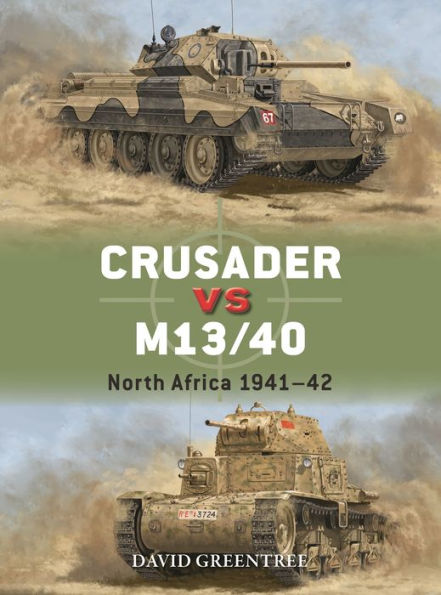Making its combat debut in North Africa during December 1940, Italy's M13/40 medium tank was armed with a 47mm main gun. Its British opposite number, the Crusader I, was armed with a 2-pdr (40mm) main gun; it entered the fighting in June 1941. While the M13/40 could fire armour-piercing rounds but also high-explosive ammunition against infantry and towed-gun targets, the Crusader could only fire armour-piercing ammunition. In this book, David Greentree charts the evolution of these two tanks as the Desert War raged on.
While the Crusader III, making its debut at the Second Battle of El Alamein in October 1942, was armed with the much more effective 6-pdr (57mm), the M13/40 could not be upgunned or uparmoured; new types such as the US-built M3 Grant tipped the balance in favour of the British. Joined in the front line by the similar M14/41, the M13/40 soldiered on; as the M4 Sherman also entered British service, the Italian tanks were largely wiped out as the Axis forces retreated from Egypt.
Featuring all-new full-colour artwork, archive photographs and expert analysis, this engaging study assess the origins, development and combat effectiveness of these two mainstays of the Desert War during 1941–42.
Making its combat debut in North Africa during December 1940, Italy's M13/40 medium tank was armed with a 47mm main gun. Its British opposite number, the Crusader I, was armed with a 2-pdr (40mm) main gun; it entered the fighting in June 1941. While the M13/40 could fire armour-piercing rounds but also high-explosive ammunition against infantry and towed-gun targets, the Crusader could only fire armour-piercing ammunition. In this book, David Greentree charts the evolution of these two tanks as the Desert War raged on.
While the Crusader III, making its debut at the Second Battle of El Alamein in October 1942, was armed with the much more effective 6-pdr (57mm), the M13/40 could not be upgunned or uparmoured; new types such as the US-built M3 Grant tipped the balance in favour of the British. Joined in the front line by the similar M14/41, the M13/40 soldiered on; as the M4 Sherman also entered British service, the Italian tanks were largely wiped out as the Axis forces retreated from Egypt.
Featuring all-new full-colour artwork, archive photographs and expert analysis, this engaging study assess the origins, development and combat effectiveness of these two mainstays of the Desert War during 1941–42.

Crusader vs M13/40: North Africa 1941-42
80
Crusader vs M13/40: North Africa 1941-42
80
Product Details
| ISBN-13: | 9781472861092 |
|---|---|
| Publisher: | Bloomsbury USA |
| Publication date: | 09/10/2024 |
| Series: | Duel , #137 |
| Pages: | 80 |
| Product dimensions: | 7.10(w) x 9.50(h) x 0.30(d) |
